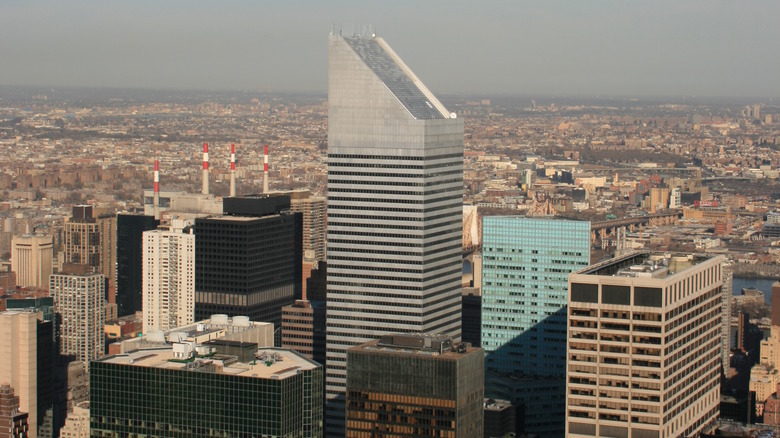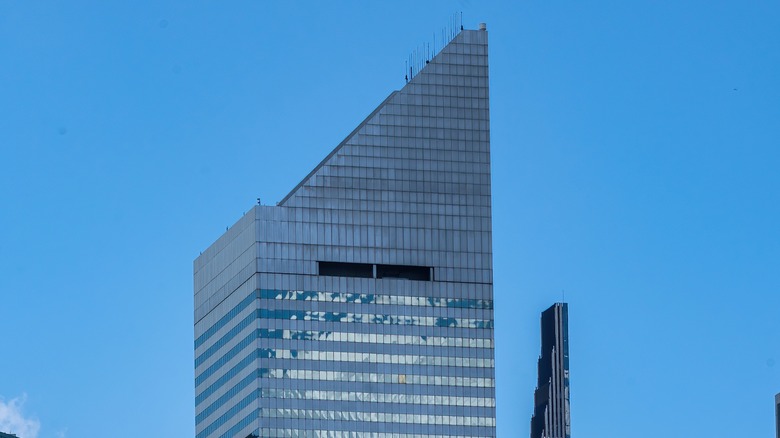The NYC Skyscraper That Almost Demolished Midtown Manhattan
Many people have the images of the World Trade Center towers coming down seared in their brains. The ensuing dust clouds engulfed many surrounding blocks and turned a bright sunny day pitch-black. The buildings' fate was something that the architects surely had not anticipated: two planes being used as missiles. It was the worst disaster involving buildings in New York City's history.
What if we were to tell you that an almost equally bad disaster involving the Citicorp Center building in Midtown Manhattan was averted years earlier? According to Slate, If certain conditions had been met, the mammoth skyscraper could have tilted and fallen over, doing enormous damage to the buildings around it. The loss of life would have been catastrophic. Fortunately, it never happened, thanks to one eagle-eyed architecture student.
That architecture student was named Diane Hartley, per the New York Post, and she was doing a project on the Citicorp Center in 1978, a year after the building had been erected. After doing her research, she noticed a big problem — if there were quartering winds that were coming in from the corners, the building could possibly topple over like a 59-story domino.
The Citicorp Center would have done catastrophic damage if it fell
According to the New York Post, Hartley then told this to Hugh Stubbins, the architectural firm for the building. Rather than dismiss her, they had William LeMessurier, their chief structural officer, go over her calculations. He found that her math proved her right and that the Center was vulnerable to those types of winds.
They scoured wind data and found that a storm that has these types of winds usually occurs every 55 years. Even worse, if a blackout happened, then even a lesser storm could cause catastrophe. The odds were not in their favor; each year, there was a 1 in 16 chance that the building could fall. Hollywood couldn't dream of what was then happening — a hurricane, Ella, was forming in the Atlantic Ocean and it was a powerful beast.
The architectural firm then coordinated with the members of the building and the NYPD and hammered out a 10-block evacuation plan should Ella hit New York. There were over 2,000 Red Cross volunteers ready to swoop in to help.
Fortunately, the developers were able to proactively fix the issue for several reasons. First, New York newspapers were on strike at the time, so there was no coverage. Second, the construction workers were able to fix the problem without any of the office workers knowing about it since they worked overnight shifts. Third, it was not revealed that anything had happened until 1995, well after the situation had been fixed.
9/11 was horrific enough, but the Citicorp (now Citigroup) building still stands tall in Manhattan, its presence still a beacon for tourists to get their bearings. It's all due to a graduate student who was brave enough to present her findings. They should make a movie about that.

